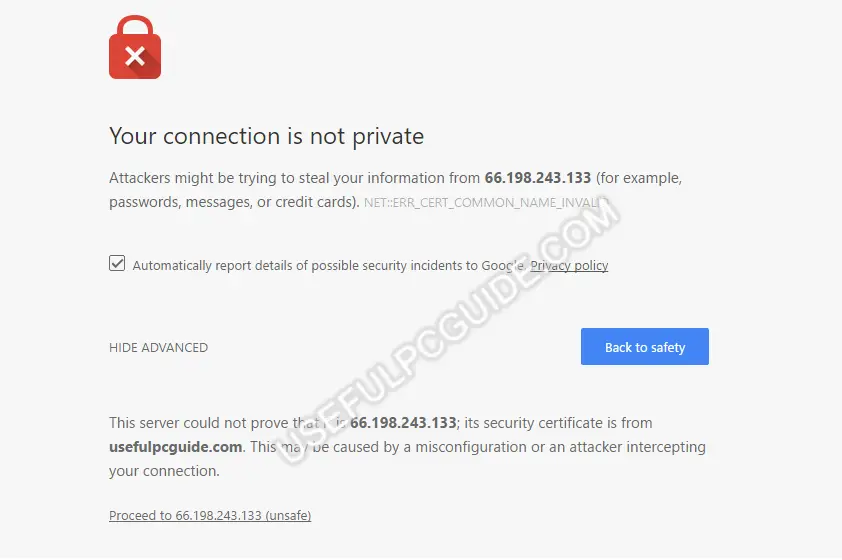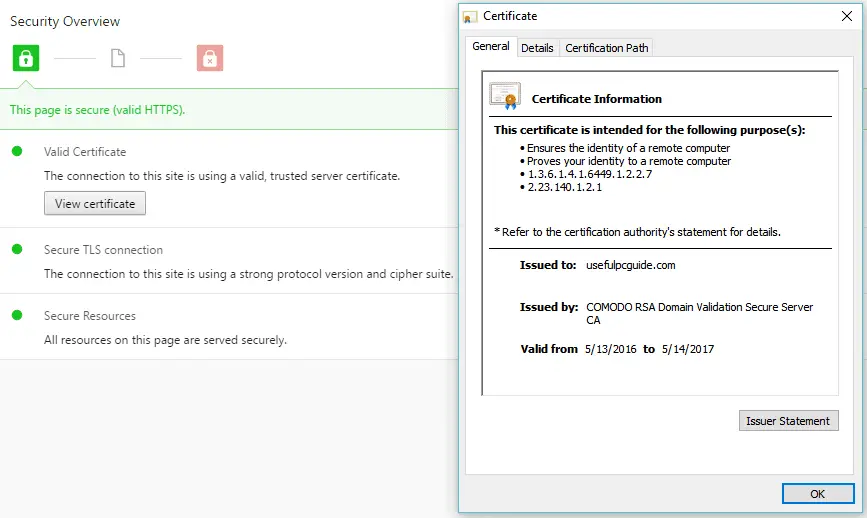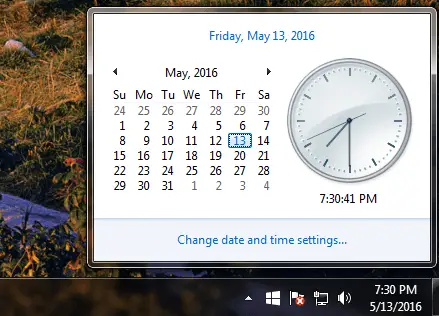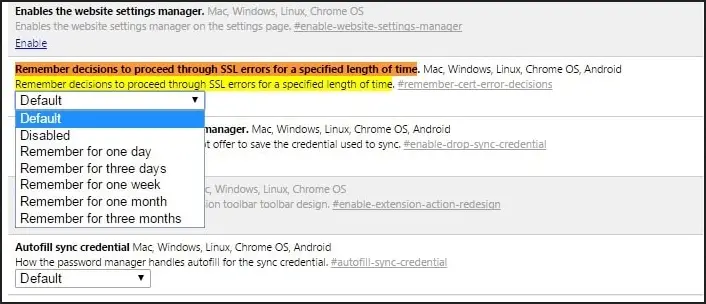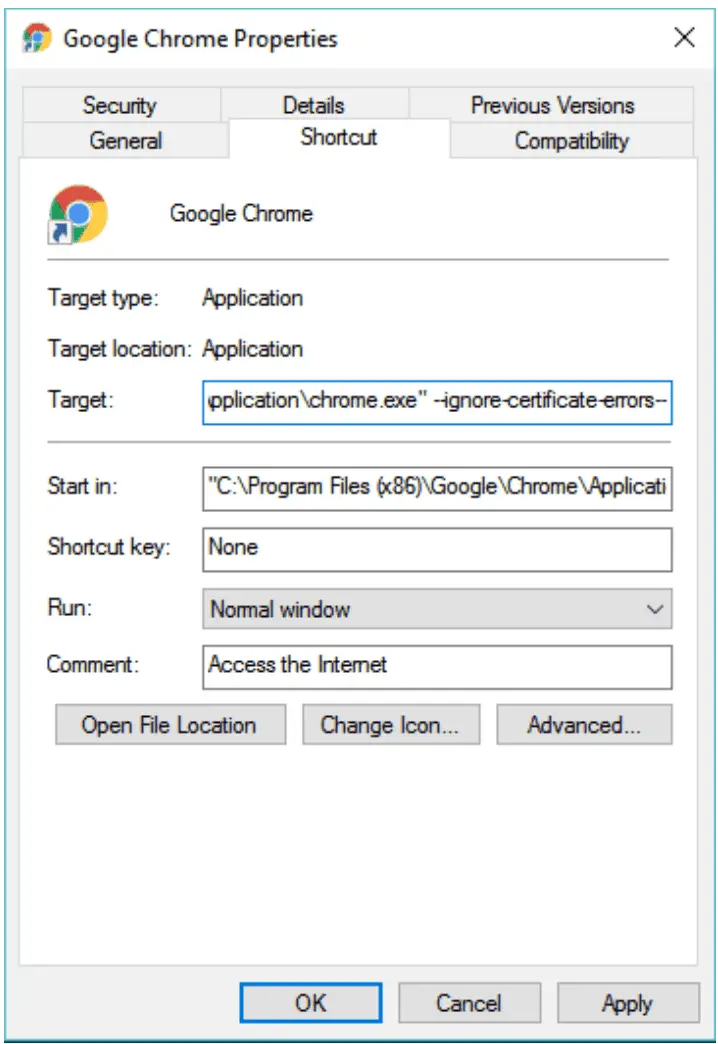Disclaimer: This post may contain affiliate links, meaning we get a small commission if you make a purchase through our links, at no cost to you. For more information, please visit our Disclaimer Page.
Last Updated on January 9, 2022
A useful guide to fixing Your Connection Is Not Private error in Google Chrome. If you are getting this annoying issue on your Chrome browser, try applying all 6 solutions on this guide, one at a time, to get rid of it.
The Internet is a good thing in our life. It brings us great resources to learning, working or shopping through computers or mobile devices.
But it’s also a powerful thing, which hackers can use to exploit users’ information and then stealing from them.
There is much information that attackers can collect when users access the Internet through insecure connections. The privacy and personal information are important things.
We need to protect ourselves from attackers by using secured connections.
When you visit a website with an SSL secure method (or also known as https) and an error message show up as below, then please carefully take a look at the website address again and make sure it’s correct.
Your connection is not private
Attackers might be trying to steal your information from www.example.com (for example, passwords, messages, bank information or credit cards).
NET::ER_CERT_COMMON_NAME_INVALID
What is this error and why does it appear on your Google Chrome browser when visiting HTTPS websites?
Table of Contents
Your Connection Is Not Private Error In Google Chrome
Source: https://usefulpcguide.com/
Typically, the above error message appears in your Google Chrome browser because there is a problem with the SSL connection, and your browser can’t verify the SSL certificate.
SSL is a secure method to encrypt data from your computer (in this case, it’s your browser) and send to the server, help to keep the information private and safe while transmitting – and opposite.
With this SSL error, it means your computer or current internet connection prevents the Google Chrome browser to load the requested website with a private and secure method.
Why SSL Errors Appearing In Your Chrome Browser?
There are many causes that could lead to this SSL error, such as unknown SSL certificates, expired SSL certificates or the connection between your computer and server isn’t secured. But here are three main reasons why SSL warnings appear:
- The SSL connection between your computer and the server isn’t secured.
- The SSL certificate is expired, set up in a wrong way or does not belong to the requested domain (NET::ER_CERT_COMMON_NAME_INVALID). Check out the example here to learn more about it.
- The SSL certificate isn’t issued by a trusted organization. You know, it’s very easy to issue an SSL certificate and install on your website, no need to purchase from elsewhere. However, this SSL certificate isn’t created by a trusted company or organization.Most of the internet browsers only recognize trusted SSL certificates. So if you create an SSL certificate and install in your website by yourself, these browsers will show a warning because they can’t be sure the connection is secure and private.Don’t have much money to spend to purchase an SSL certificate? Check it out the free SSL certificate from CloudFlare or purchase one from NameCheap for $10.
Fix Your Connection Is Not Private Error In Chrome Browser
As I mentioned above, there are many reasons can cause this SSL connection error. But you can only fix the SSL error when it came from your computer or your device.
There is no way to fix it if the SSL certificate is unknown, expired or a wrong setup from the server side until the owner fixes it, or someone who has the right to do.
In this guide today, I will tell you a few reasons that can lead to this error in your Chrome browser, and show you ways to fix it, or bypass it if there is no solution available.
Check The Date And Time Of Your Computer
In most cases, the wrong date & time on your computer is the main reason that prevents the Google Chrome browser to verify the SSL certificate. That’s why the SSL error message showed up.
To resolve this SSL connection error, you need to adjust the date & time of your computer or any devices, which are receiving this error. After updating the date & time of those devices, the SSL error will be gone.
Check Your Antivirus Software Or Firewall
Sometimes, antivirus software blocks strange SSL certificates or connections. The best way to fix this SSL error is to turn off the https scan feature in your antivirus or firewall software.
If you think your antivirus or internet security blocked SSL connections, and there is nowhere to turn off “SSL Scanning” feature, you can try to disable the program temporarily to test.
If the issue is gone after disabling the program, I would suggest you switch to another antivirus or internet security program.
[full-related slug1=”best-free-adware-removal-tool-windows” slug2=”best-free-antivirus-software-windows”]If you have installed and are using the Avast antivirus software to protect your computer from threats, you can go to Settings > Active Protection > Web Shield > Customize.
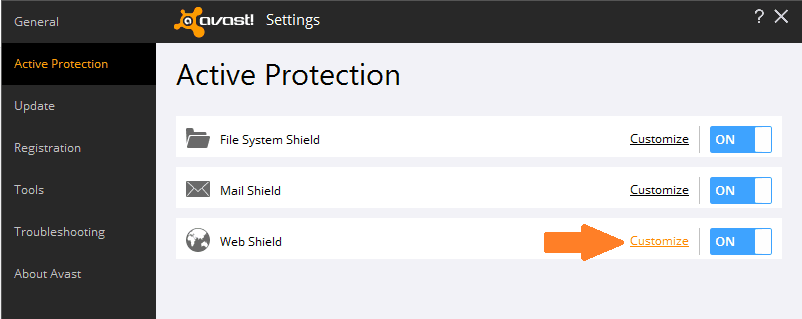
Avast Antivirus – HTTPS Scanning Feature
In the next screen, unselect the “Enable HTTPS scanning” feature and click the “OK” button.
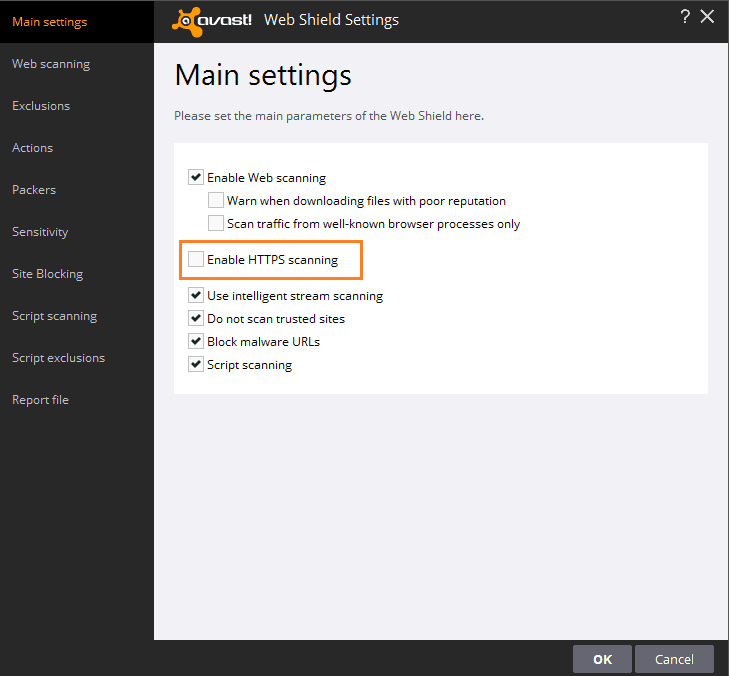
Disable HTTPS / SSL Scanning
But if you have installed Bitdefender as your antivirus program on your computer, you can go to Settings > Privacy Control > Antiphishing and then just turn the “Scan SSL” feature off.
You also need to disable the built-in firewall or third party firewall programs to make sure they aren’t a cause.
Disable The Warning Message To Bypass Your Connection Is Not Private Error In Google Chrome
If you don’t want to see the “Your connection is not private” or “Net::ERR_CERT_DATE_INVALID” error message anymore, just turn off it in your Google Chrome browser.
- Type “chrome://flags” in your Google Chrome browser address bar and press the Enter key.
Find “Remember decisions to proceed through SSL errors for a specified length of time”, and then select the period you want to remember this selection.
- After that, you only need to view this SSL error one time and just click on “Process to <website address> (unsafe)“. There is no more warning in the future.
Updated: I have received some reports from users telling me that this option is not available in Google Chrome flags anymore. They can’t find it by entering chrome://flags. I have tried myself, and it seems this option is disappeared. But some users still have it in their Chrome browser. So if you can’t find this option, try to use other methods.
Process To The Website With An Insecure Connection
In case you can’t fix this error because it’s a website error – you can choose to “Proceed to <website address> (unsafe)“, with your own risk. To do so, click on the “Advanced” link.
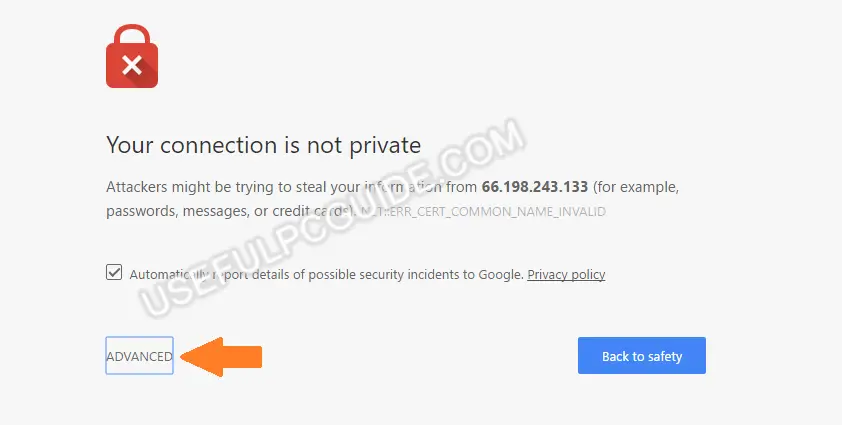
Source: https://usefulpcguide.com/
Click on the Advanced link to show “Proceed to website” link.
And then hit on “Proceed to <website address> (unsafe)“.
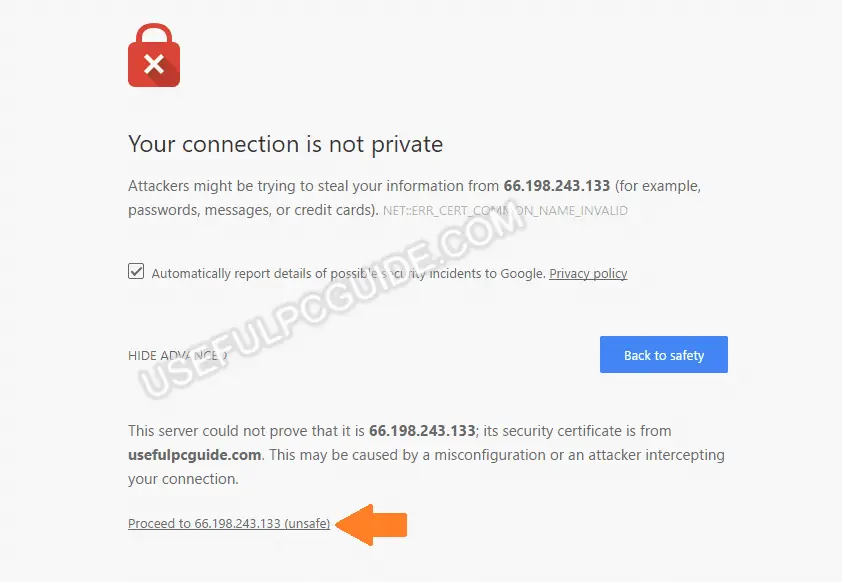
Source: https://usefulpcguide.com/
Bypass the “Your connection is not private error” in Google Chrome with two simple clicks.
However, only use this method if you are sure the website you attempt to visit is safe.
This method is just for temporary, and nothing you can do to make this error disappears, except bypass or ignore it and wait for the owner or webmaster to repair. Until then, don’t provide any important information when the website asked because it’s not safe.
Ignore The SSL Certificate Error From Google Chrome Shortcut
This method is just a way to ignore and bypass the SSL connection error as I mentioned above. It can’t use to fix the problem permanently. However, it can make all warnings that related to SSL errors in your Chrome browser disappear for good, until you choose to show it again.
On your desktop, right-click on the Google Chrome shortcut and select “Properties“.
Add more parameters as you see in the picture below and click the OK button. After doing this, the error will be ignored all time, and there would be no error message in the future.
You should know that if this error comes with the error code: NET::ERR_CERT_COMMON_NAME_INVALID, then in most cases, it’s a fault from the server side. All you can do in this situation is only bypass the error message by clicking “Proceed” link or use ignore-certificate-errors– tag in Google Chrome shortcut.
Updated: The correct ignore tag in Google Chrome shortcut is:
–ignore-certificate-errors
To show you how this error will appear on your Chrome browser, I have created a test page which is now available at:
https://test-error.usefulpcguide.com/
Just visit this website in Google Chrome browser and the error will show up.
Fix Your Connection Is Not Private Error In Android Or iOS Device
Basically, if the “Your connection is not private” error is appearing in your mobile devices, such as an Android or iOS smartphone or tablet, then it’s caused by those above causes.
The first thing to do is check and make sure the date & time on your mobile device is correct. If you have recently installed any new security software, I would recommend to disable them.
If you can visit the same HTTPS website with other browsers on your mobile devices, such as Firefox or Opera – then something just happened to your Google Chrome browser. You should try to remove all cookies, history and cached files on your browser.
To remove all these files, go to Settings > Privacy > Clear Browsing Data > choose what you want to remove and then click on the “Clear Browsing Data” button. Sometimes, this method is worked with desktop version too.
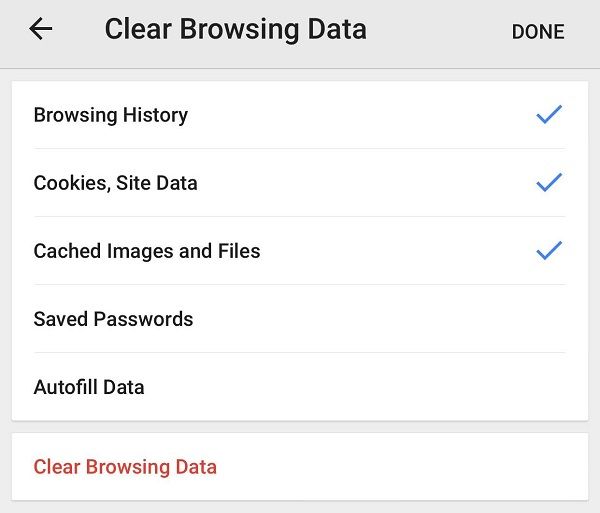
Clear Google Chrome browsing data on iOS or Android.
Resetting or reinstall Google Chrome would be helped, but only do it if above methods didn’t work.
That’s it!
I hope this information and methods can help you understand more about this SSL error as well as how to resolve when it occurs. You may also face this SSL connection error on Google Chrome browser in other platforms, such as macOS or Linux, and this guide is still helpful.
If you found other ways to fix this SSL error: Your Connection Is Not Private, in Google Chrome, feel free to share with me. I will update the article with your solutions to make it more useful.
If you have any question want to ask or need more help to resolve this issue, don’t hesitate to leave your comment below. I will answer your question as soon as I read your comment!
Popular Posts:

